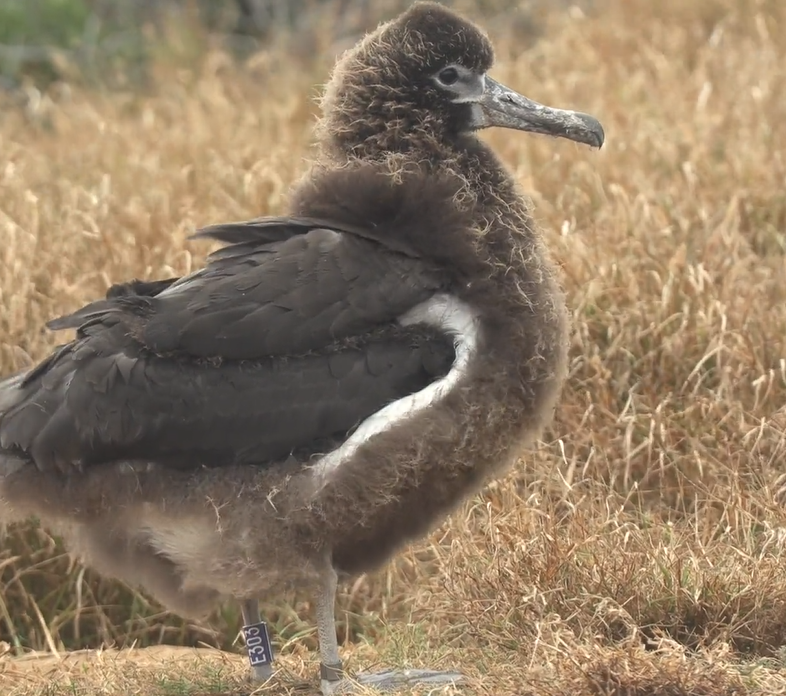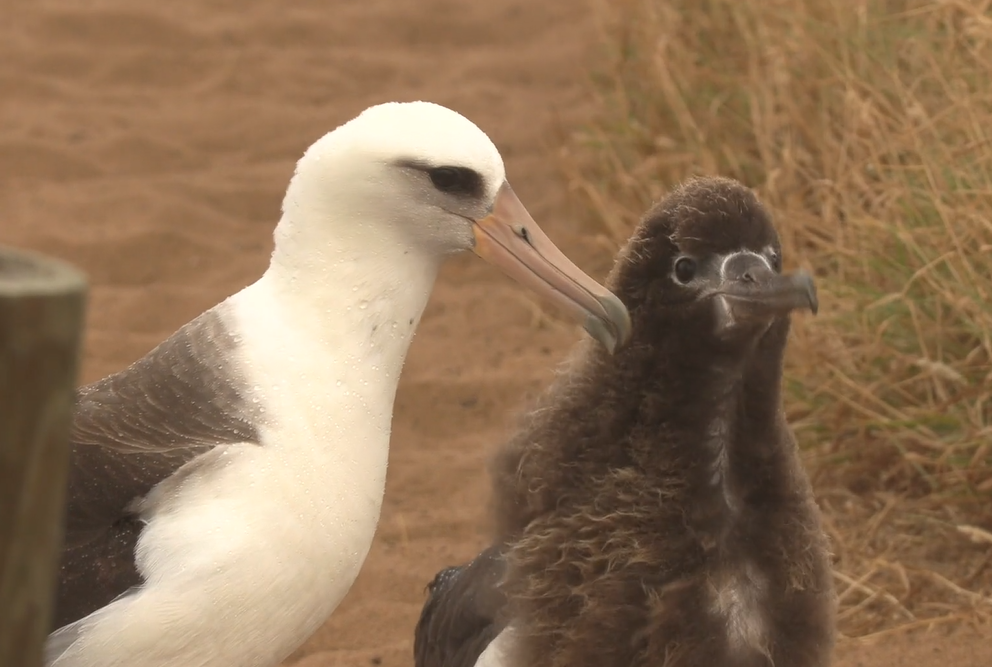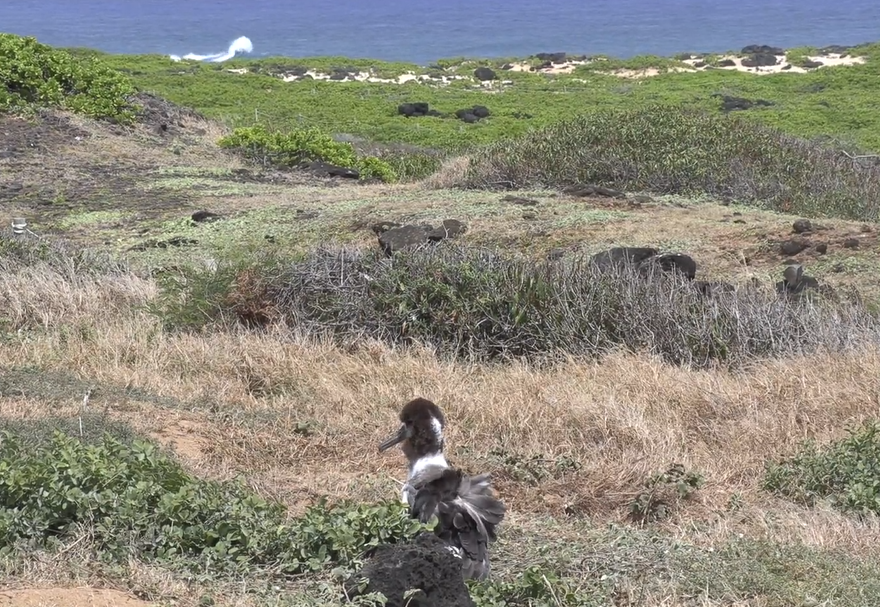Albatross flock back to Oahu’s Kaʻena Point during 40 years as protected reserve

Four decades ago, Ka‘ena Point — the northwestern-most tip of O‘ahu — was a landscape of battered vegetation with crisscrossing dirt roads used.
When it was first designated as a Natural Area Reserve in 1983, there were no seabirds and the remaining vegetation was being destroyed by off-road vehicles.
“People were driving all over the place,” said Marigold Zoll, O‘ahu Branch Manager of the state Division of Forestry and Wildlife. “It was recognized as a special place and so vehicles were blocked from entering. And, little by little, as we did ecosystem restoration, the birds came back.”
Oh, did they return. Each year, an estimated 30,000 seabirds nest within the Ka‘ena Point Natural Area Reserve.
For more than 20 years, Dr. Lindsay Young, director of Pacific Rim Conservation, has worked with Laysan albatross nesting at the reserve.
“It’s often called the last coastal dune ecosystem in Hawai‘i,” Young said. “It’s the first restored one certainly and that’s an important point to make because before it was a free-for-all. The place was kind of destroyed.”
She says it’s truly remarkable what can happen in a 20- to 30-year period.
This season, 98 albatrosses had nests at Ka‘ena Point, the second-highest number recorded.
“We have relatively high fledging success, high hatching success and very little predation from rats, cats and mongooses because of the predator exclusion fence that’s been in place for 12 years, Young said. “It’s one of the few high-island albatross colonies in the world and that’s super-important for the long-term persistence of the species.”
While thousands of wedge-tail shearwaters burrow underground and out of sight, adult and juvenile albatrosses provide constant entertainment for visitors. They are the longest-lived birds in the world and have wing spans of six to seven feet. On land, they waddle around, but when they take off, they gracefully sail on the winds over thousands of miles of open ocean and for as long as two years at a time.
“We tend to become attached to larger animals that we perceive to be more like us,” Young said. “These are large birds, and they live 60 to 70 years, much like people. They have a breeding system that’s very similar to ours, so generally monogamous. On top of it, they’re stunningly beautiful and really interesting. I think a lot of those features draw people to them.”
Another big attraction at the Ka‘ena Point Natural Reserve, and the adjoining Ka‘ena Point State Park, are Hawaiian monk seals. Recently several mom and pup pairs have been seen lounging on the point’s beaches.
In 40 years, with a lot of hard work, dedication and passion, Ka‘ena Point has been restored to one of the last wild places on an otherwise mostly urbanized O‘ahu. It is the only protected area in the world where you can walk unescorted on a trail next to nesting albatrosses.
“We want people to enjoy these special places firsthand but with that privilege comes a responsibility to exercise restraint and use responsible wildlife viewing practices when around these wild animals, for their and yours,” Zoll said.
Young added: “It is unique in that people can see these amazing birds up close. This year we had a bird that nested right next to the trail and the chick’s favorite spot was right in the middle of the trail, so we do have ‘ambassador’ birds that interact with everybody.”



























